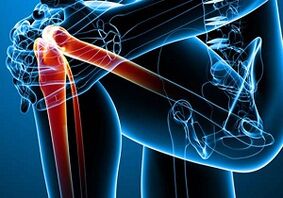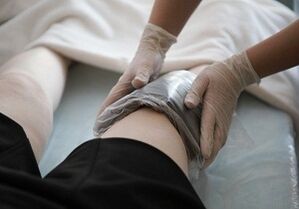People at different ages, especially after the age of 40-50, have many joint problems, but it is difficult to determine which disease develops without the help of a specialist. Common diseases are arthritis and osteoarthritis. What is the difference, how to treat, how to prevent articular pathologies?
The advice of experts on the treatment of diseases of the musculoskeletal system will be useful for many. For treatment to be successful, it is important to understand how arthritis and osteoarthritis are recognized.
Common symptoms

Articular pathologies have a common root in the name. Translated from the Greek, "arthron" means "joint. "
Osteoarthritis and arthritis are injuries to the joints. The pathological process is accompanied by anxiety, pain, damage to cartilage tissue, limited mobility of the problem area. Both arthritis and osteoarthritis disrupt the patient's normal lifestyle.
When diagnosing diseases, it is important to take into account all the symptoms and conduct the necessary research and analysis.
Articular pathologies have many differences, misdiagnosis reduces the quality of treatment.
Basic information about joint pathologies
It is important to understand not only the similar and different symptoms of osteoarthritis and arthritis, but also the causes, types and characteristics of the course of articular pathologies. Understanding the triggers that trigger negative processes in cartilage tissue under its influence will help prevent disease.
| Arthritis | osteoarthritis | |
|---|---|---|
| Reasons | Inflammation on the background of systemic pathological or articular tissue infection | Destruction of cartilage during tissue erosion, especially in old age. Improper metabolism leads to loss of elasticity, changes in cartilage structure, erosion, partial or complete destruction of cartilage tissue. |
| Motivating factors | Infectious diseases, allergies, injuries, hypothermia, metabolic disorders, heredity, stress, vitamin deficiency | Aging, overweight, injuries, malnutrition, autoimmune pathologies, deterioration of blood supply to cartilage and bone tissue, inflammatory processes in the body, thyroid dysfunction, excessive stress on the joints, hypothermia, hereditary predisposition. |
| Pathological types | monoarthritis, polyarthritis | Primary (cartilage damage due to lack of nutrients, poor blood circulation). Secondary - the disease develops in the injured joint, more often after the injury |
| Forms of the disease | Purulent, rheumatoid, juvenile, gout | Four stages: from a slight narrowing of the joint space to a noticeable deformation with complete closure of the joint space. |
| Complications | Prolonged presence of an infectious agent in the joints and other organs impairs health and reduces immunity. The mobility of the limb is impaired, the tissues swell and ache during exacerbation, and many familiar movements are difficult to perform. | In the absence of treatment: complete destruction of joints, immobilization of the joint, adverse changes in the intervertebral discs. |
| Forecast | With timely treatment, many types of arthritis can be completely cured by eliminating the inflammatory process. | The disease is difficult to treat, often chronic. Osteoarthritis is an irreversible process, it is impossible to restore 100% of the quality of cartilage tissue. Authoritative therapy improves the condition of cartilage, preserves the functionality of the organs, but if certain rules are violated, the disease progresses. |
What is the difference between arthritis and osteoarthritis?
Articular pathologies are more different from similar symptoms. Knowing the etiology of the disease, it is easy to distinguish arthritis from osteoarthritis.
Information for patients:
- arthritis develops against the background of an inflammatory process in the joint, osteoarthritis is the result of degenerative processes, degenerative changes in cartilage tissue;
- both pathologies have acute and chronic forms, but arthritis occurs with more pronounced symptoms, the inflammation actively spreads not only to the joint but also to other areas;
- Osteoarthritis is a chronic disease, the remission is longer, the cartilage is gradually destroyed without severe inflammation of the tissues.
The table describes the differences in articular pathologies according to the main features:
| Arthritis | osteoarthritis | |
|---|---|---|
| The cause of pathological changes | Infection that provokes acute and chronic inflammation | Degenerative-dystrophic changes, gradual destruction of cartilage tissue. The main reason is the negative processes that occur against the background of aging. |
| The nature of the pathology | More acute than osteoarthritis, remission is replaced by active inflammation | With longer, more frequent, slow, exacerbation periods |
| area of influence | The infection spreads beyond the joint area. Monoarthritis (in one joint), polyarthritis (affecting several areas, for example, polyarthritis of the fingers) develops. | Articular tissue in one area, such as osteoarthritis of the knee joint. Other organs are not involved in the destructive process |
| Localization zone | Small joints: wrists, fingers, hands, ankles. The knee area is also at risk | Large joints: hips, knees, thumbs, less often, phalanges of fingers and ankles |
| Age of patients | More often - up to 40 years | The main category is people aged 45 and older, more 55-60 years |
| Risk group | Young men. The development of the disease is associated with dangerous bacterial and viral infections, organ damage. Juvenile rheumatoid arthritis is diagnosed in children and adolescents | Women after the age of 45-50. Against the background of menopause, degenerative processes develop. In men, dystrophic changes in cartilage often develop against the background of high load on the joints throughout life, with the difficult nature of work associated with weight lifting, monotonous movements. |
How to distinguish between symptoms

It is easier to recognize the onset of the disease with an infectious type of pathological changes.
Osteoarthritis often does not manifest itself for a long time, often patients see a doctor with the second, middle stage of the disease.
Pay attention to the main symptoms of articular pathologies. Even a small discomfort in the joints should increase the suspicion of the development of negative processes in the cartilage tissue.
Proper and timely diagnosis helps to differentiate arthritis from osteoarthritis and to prescribe the right treatment.
Arthritis symptoms:
- swelling or severe swelling of the problem area;
- the skin in the affected area becomes red;
- the patient becomes inflamed joint;
- hot, active inflammation to the touch of the affected area, the penetration of a dangerous pathogen, the general temperature rises;
- sharp pain is heard when moving, at rest, pulsation, "twitching", pain in the area of inflammation does not disappear;
- often the infection affects other parts of the body, health deteriorates, weakness develops, chronic pathologies become more active;
- Adverse processes often develop in the fingers, hands, ankles, less often in the knees.
Symptoms of osteoarthritis:
- the wavy nature of the pain. In the early stages the pain is weak, the intensity does not increase for a long time;
- gradually the pain increases, in the morning there is stiffness in the problem joints;
- As dystrophic changes develop, the mobility of the affected area decreases, and in advanced cases, complete immobility is possible due to the destruction of cartilage;
- The main sites of localization are the hip joints (coxarthrosis), spine (spondylarthrosis), knees (gonarthrosis).
The main methods of treatment of diseases
Patients often believe that a "tried" recipe for arthritis suggested by a neighbor will definitely help with osteoarthritis. Indifference to the nature of the disease often damages the joints, worsens the condition of the body.

For example, arthritis has an active inflammatory process, the infection spreads to a large area of tissue. Warming is strictly forbidden, but often patients heat their painful knees with arthritis in the hope of recovery. The result is quite the opposite: heat accelerates the development of the inflammatory process, the infection penetrates the new parts of the joints and other organs through the blood and lymph flow, the disease progresses.
The main differences in the treatment of arthritis and osteoarthritis are due to the nature of pathological processes. Therapy scheme, use of drugs, folk remedies, exercise therapy complex, physiotherapy is developed by a rheumatologist, orthopedist or arthrologist. In the advanced stages of osteoarthritis (less often, with arthritis), the help of an orthopedic surgeon is needed.
Information for patients! Warm bandages are effective with osteoarthritis, and cold compresses are recommended to relieve inflammation in arthritis.
Treatment of osteoarthritis
Basic principles:
- The main task is to normalize the condition of cartilage tissue. The doctor prescribes chondroprotectors with hyaluronic acid, chondroitin sulfate and glucosamine. A long course of treatment improves the elasticity of cartilage tissue, restores blood circulation, metabolism, stops degenerative-dystrophic processes;
- In severe cases, NSAIDs are needed to relieve pain and inflammation caused by articular tissue erosion. However, they are ineffective as a primary tool in the treatment of osteoarthritis;
- physiotherapeutic procedures, special exercises are useful;
- patients successfully apply traditional methods. Homemade ointments, decoctions, compresses, baths, tinctures are made from natural ingredients. Proper use of compounds eliminates pain, improves joint mobility;
- Surgical treatment is performed with complete destruction of cartilage tissue - arthroplasty. Osteoarthritis cannot be completely cured, you can only maintain joint health and prevent exacerbations.
arthritis treatment
Basic principles:
- The first stage is the fight against pathogenic bacteria, dangerous viruses, under the influence of which the inflammatory process has begun. Non-steroidal anti-inflammatory drugs are required;
- it is important not only to destroy the causative agent of the infection, but also to strengthen the immune system;
- recommended protein diet, vitamin therapy, dairy products. It is mandatory to abstain from alcohol, strong coffee, sweet carbonated drinks, black tea (preferably green);
- Physiotherapy has an excellent effect: electrophoresis with anti-inflammatory drugs, magnetic and laser therapy, therapeutic baths. After stopping the inflammatory process, a complex of exercise therapy, massage will help restore the mobility of the diseased joint. Useful folk methods without the use of heat.
There is a significant difference between arthritis and osteoarthritis. Knowing the characteristics of joint diseases will help the patient to manage the pathological process, will skillfully use all available treatments. Under the guidance of an experienced doctor, you can cope with any articular pathology.


















